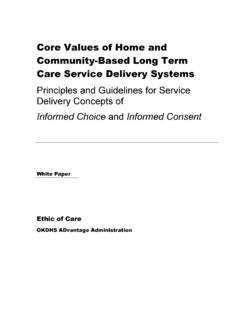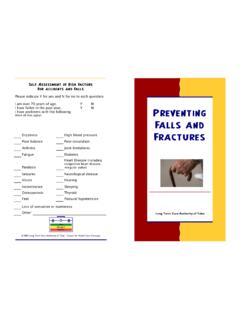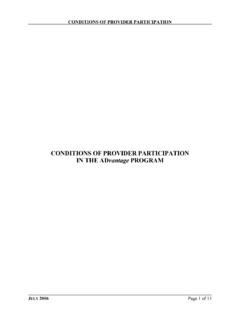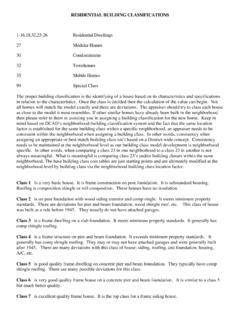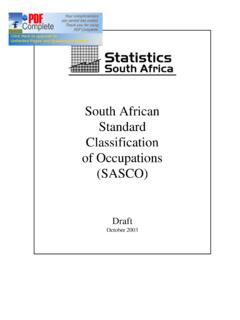Transcription of Spirometric Classifications of COPD - Oklahoma
1 Stages of copd and Spirometric Classifications Stage I: Mild copd Mild airflow limitation (FEV1/FVC < 70%; FEV1 > 80% predicted) and sometimes, but not always, chronic cough and sputum production. At this stage, the individual may not be aware that his or her lung function is abnormal. Stage II: Moderate copd Worsening airflow limitation (FEV1/FVC < 70%; 50% < FEV1 < 80% predicted), with shortness of breath typically developing during exertion. This is the stage at which patients typically seek medical attention because of chronic respiratory symptoms or an exacerbation of their disease.
2 Stage III: Severe copd Further worsening of airflow limitation (FEV1/FVC < 70%; 30% < FEV1 < 50% predicted), greater shortness of breath, reduced exercise capacity, and repeated exacerbations which have an impact on patients quality of life. Stage IV: Very Severe copd Severe airflow limitation (FEV1/FVC < 70%; FEV1 < 30% predicted) or FEV1 < 50% predicted plus chronic respiratory failure. Patients may have Very Severe (Stage IV) copd even if the FEV1 is > 30% predicted, whenever this complication is present. At this stage, quality of life is very appreciably impaired and exacerbations may be life-threatening.
3 Spirometry for Diagnosis of copd Spirometry is a simple test to measure the amount of air a person can breathe out, and the amount of time taken to do so. A spirometer is a device used to measure how effectively and how quickly the lungs can be emptied. Spirometry measurements used for diagnosis of copd include: FVC (forced vital capacity): maximum volume of air that can be exhaled during a forced maneuver. FEV1 (forced expired volume in one second): volume expired in the first second of maximal expiration after a maximal inspiration. This is a measure of how quickly the lungs can be emptied.
4 FEV1/FVC: FEV1 expressed as a percentage of the FVC, gives a clinically useful index of airflow limitation. The ratio FEV1/FVC is between 70% and 80% in normal adults; a value less than 70% indicates airflow limitation and the possibility of copd . FEV1 is influenced by the age, sex, height, and ethnicity, and is best considered as a percentage of the predicted normal value.

